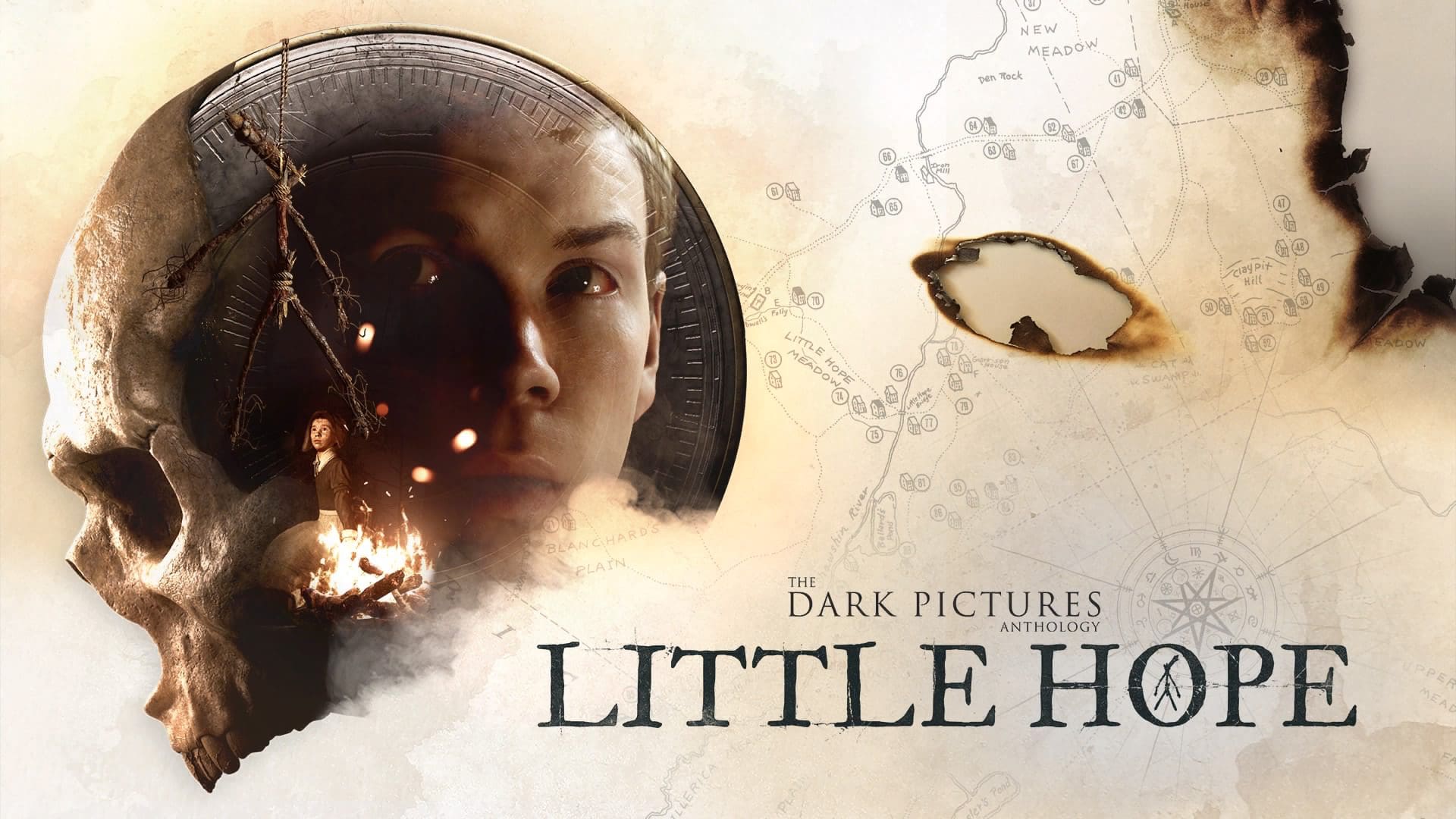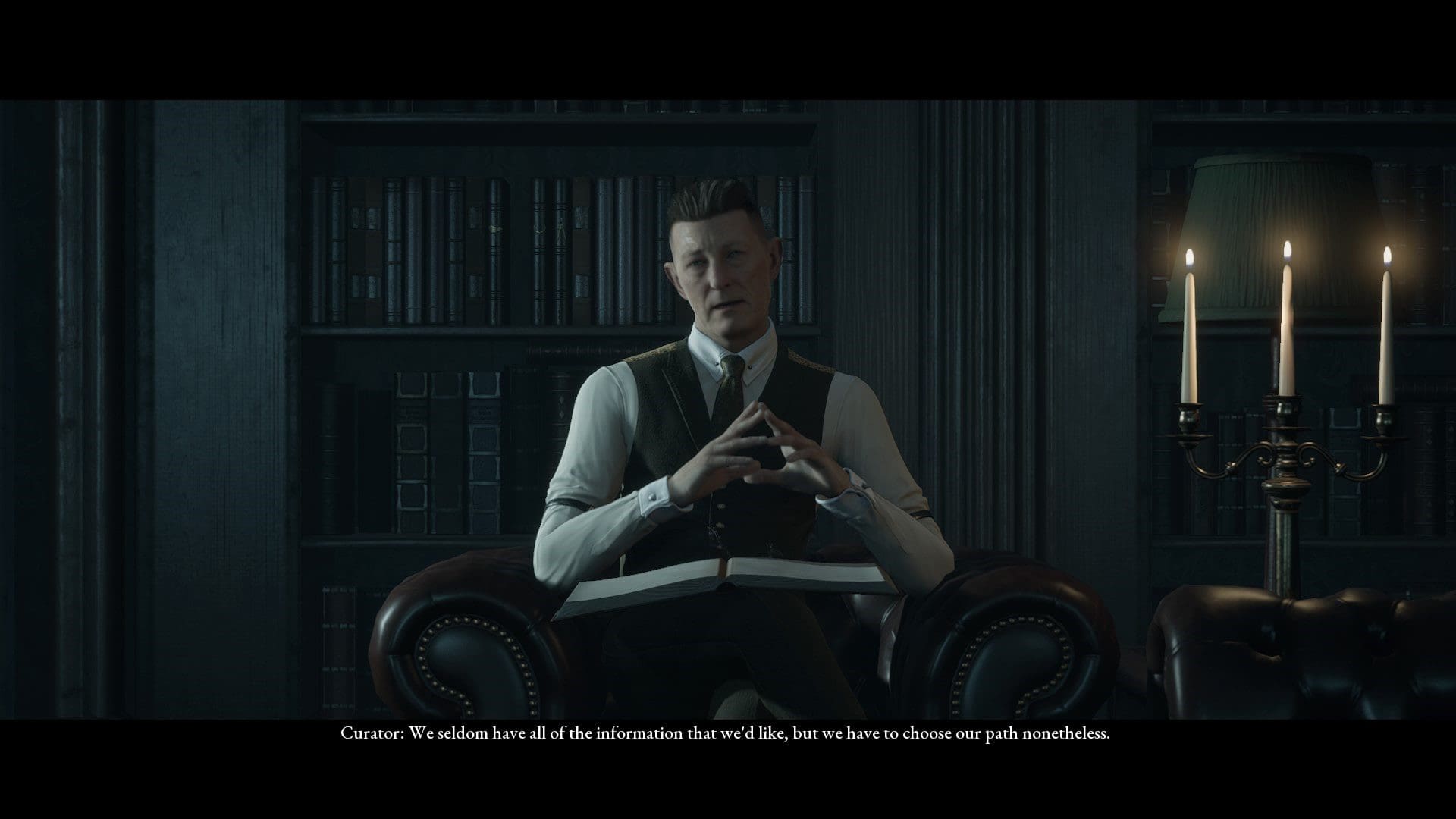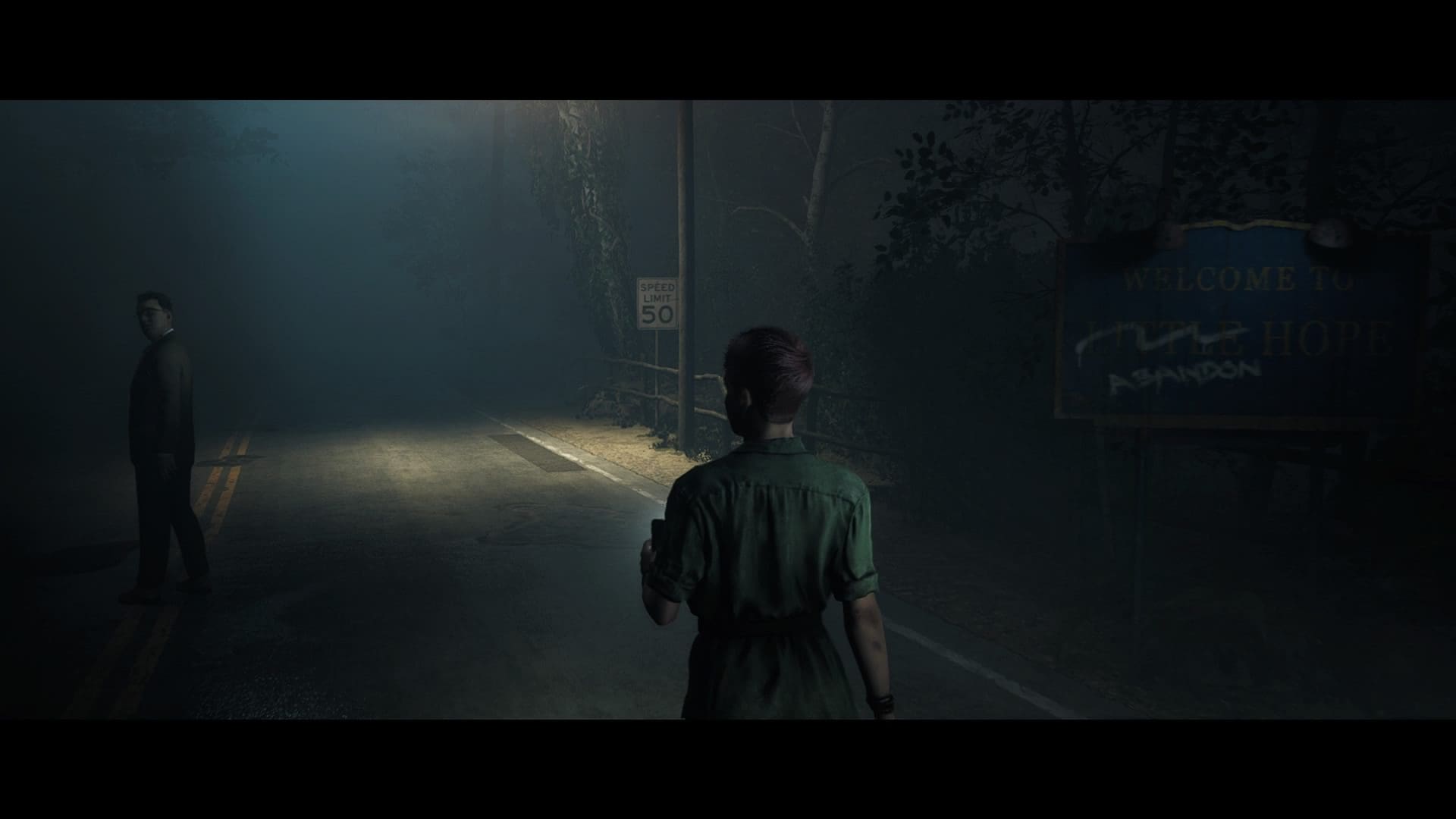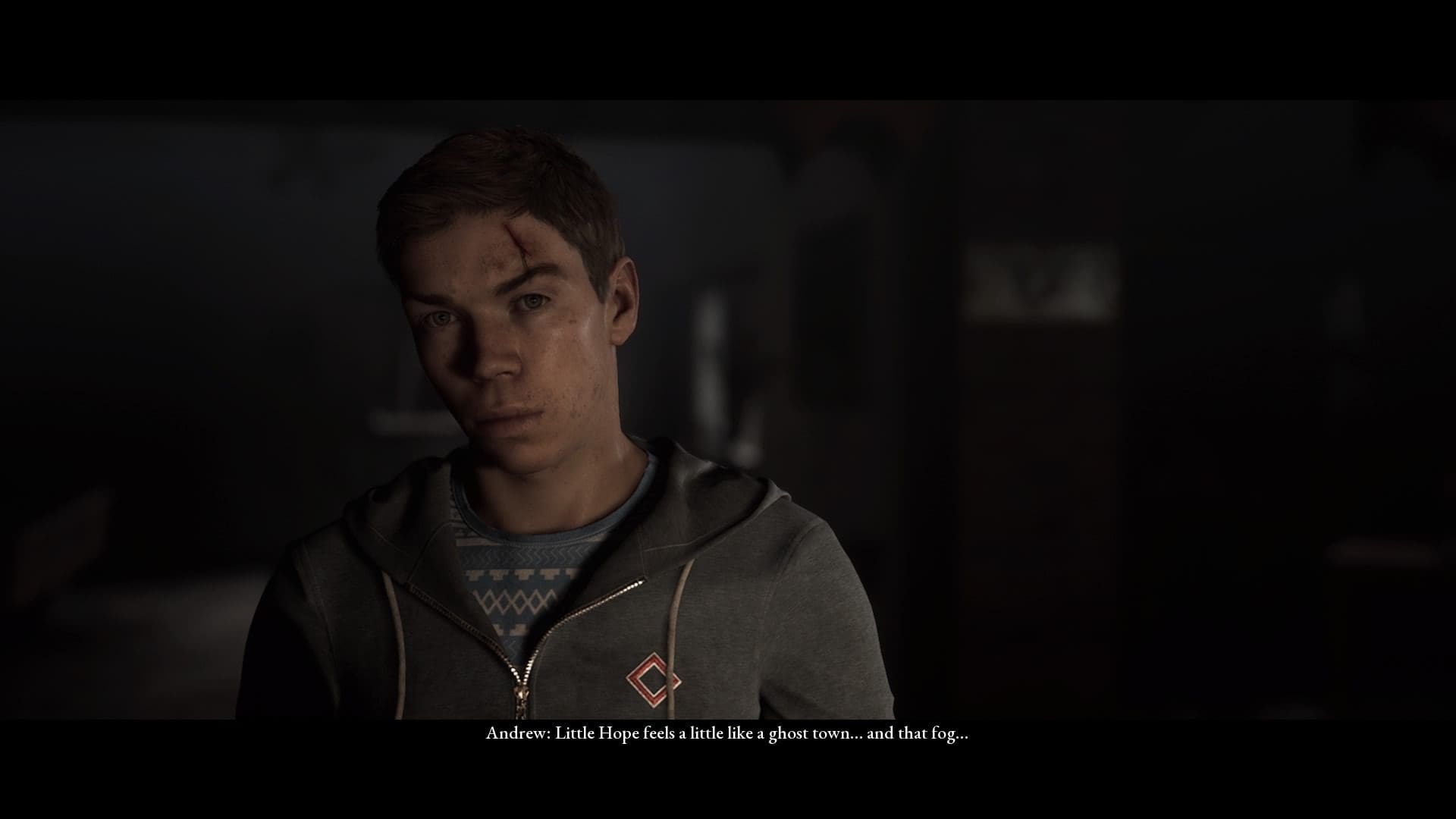
Please Note: All images in this review are screen captures from reviewer’s play on PS4.
Supermassive Games is easily one of the biggest rising studios in the game industry and their recent work shows why. Not only did they create one of the best exclusives for PS4, giving them a rare horror exclusive, with Until Dawn, but they’ve been one of the innovative and ambitious developers as they’ve created unique social game experiences with Hidden Agenda and even created some great experiences for players to explore in VR with The Inpatient and Until Dawn: Rush of Blood.
Last year they raised the bar with their innovation in delivering The Dark Pictures Anthology, an anthology-based horror series, and their first game for the series Man of Medan. The game greatly showcased Supermassive’s talents for creating choose your own adventure narratives and improved on some of the mechanics from Until Dawn. Now, the next chapter in the series, Little Hope, is finally here to give us some post-Halloween scares.
Now, it’s worth mentioning off the bat that Little Hope, in terms of structure and game mechanics, doesn’t differ from Supermassive’s past narrative choice experiences. Players will still find themselves making choices as a night of horrors unfold that determine not only the fate of this new cast of characters, but also affects their relationships and personalities. The relationship tracker is still the same as players can have a good grasp as to how their decisions affect and change relationships between characters. There’re still personality traits that heavily affect how characters interact with one another that players can keep track of, unlock, and change as they make decisions. There’re still awesome collectables for players to find that not only flesh out the lore of the world but gives players a better grasp on what’s going on. Players can also still find pictures that gives them a cryptic premonition of possible good or bad outcomes that could happen based on their choices. At face value, Little Hope is essentially the choose your own experience that Supermassive has deliver in the past. However, that’s not really a surprise.
With both games being a part of an anthology, it’s not really a surprise to see Supermassive not change too much of their formula. That would be like if one episode of The Twilight Zone didn’t open with that iconic narration, it would just make everything feel off and like it wasn’t really apart of the series and establishing The Dark Pictures as its own is definitely Supermassive’s plan with this game. With Little Hope, there’re certain elements of lore, gameplay, and storytelling that really make the series start to standalone as something new.
Where Man of Medan really felt more like a follow-up to Until Dawn and less like the start of something new, Little Hope really establishes The Dark Pictures Anthology in its own right. The time spent with The Curator (voiced by Pip Torrens), the series’ cryptic narrator, feels much more impactful to the franchise as a whole as he delivers some nods to Man of Medan as well as future stories.
Reuniting with The Curator is frankly a treat in itself as his cryptic clues constantly make you question what he’s really getting at and Torrens delightfully captures your attention with his mysteriousness and carries such a foreboding yet calming presence. It’s even better that Supermassive creates a big world for the series through minor teases of what’s to come. From The Curator grabbing a book titled Little Hope next to other books with cryptic markings that could hint at future stories to him literally name dropping the South Pacific location of Man of Medan as well as possible future settings, Supermassive definitely creates more hype and intrigue for the future of this anthology series.

Even some of mechanics are more fine-tuned to give players a much more immersive and detailed experience. While there still could be some more variations added to the great “keep calm” mechanic, which is basically a rhythm game, to add some more challenge to it, it’s great that they’ve now added another button to it to freshen it up. The decisions are now labeled “head” and “heart” to tap into how people make real-life decisions and players can even add a vibration option for their controller to vibrate when decisions are about to pop up to make them more aware of key moments.
Little Hope also embodies a currently strong movement in the gaming industry to give players better accessibility options as there’re a lot of great ways for players to customize their experience – including adding a dyslexia option for subtitles. In more action-oriented, adrenaline pumping sequences, players will also notice that they’ll be suddenly switching characters in the moment in order to create this idea of no one being safe in the moment and an ever-changing experience that keeps you guessing. Those collectable secrets now have visible connections that players can see and flesh out the world and story even more than they did before. I even noticed that decisions I was making legitimately had an impact as characters would organically reflect feelings based on decisions in cutscenes where no decisions were being made. It’s possible that some of these things happened in Man of Medan, but they feel so much more prominent here and it’s a testament to Little Hope and Supermassive pushing the series in its own direction.
The real make or break element of a Supermassive game though is with the horror story it delivers and the characters you play as, and Little Hope brings one doozy of a tale. With this chapter of The Dark Pictures Anthology, players are taken to the small town of Little Hope, Massachusetts where the town’s history is haunted by tragedy and witch trials. Although it seems to have been deserted for years, there’s an evil within that a group of college students and their professors find as their bus crashes just outside the town. Walking around Little Hope gives you chilling vibes of Silent Hill as the town is surrounded by thick, inescapable fog and is the pure definition of a ghost town. There’s this incredibly silent atmosphere that immediately makes you uneasy and with the game constantly reminding you to stay close to other characters as you walk around, there’s always that thought looming in your head that death is near. With the decrepit buildings and some of the important historical landmarks you come across, it’s easy to see that Little Hope is steeped in a dark history that players come into direct contact with.
As players explore Little Hope with this group of characters, they will not only be dealing with present horrors being awoken within Little Hope, but the past that made it such a horrifying place. Pulled into a horrifying past of Little Hope, where witch trials and lies consumed the town, players must navigate and understand the faults of the town’s past in order settle the wrath of the spirits of the present before that wrath rips the souls of the group straight to a brutal hell. With the way the characters connect to the town’s past, even in how they die, and can make changes with the past to create a better present, Little Hope is really The Crucible meets Final Destination and it’s really awesome.

All of the ways that the past and present are connecting continually create a complex and intriguing narrative, the clues you find in the present heavily influence how you view the past, and the witch trial story and setting is a very unique for a horror game that I haven’t seen since Murdered: Soul Suspect. Things especially become more interesting as we get to know this cast of characters: including quiet college student Andrew (voiced by Will Poulter), a pair of romantically involved students named Taylor (voiced by Caitlyn Sponheimer) and Daniel (voiced by Kyle Bailey), stern adult student Angela (voiced by Ellen David), and smarmy, self-assured college professor John (voiced by Alex Ivanovici).
It’s really great to have a unique cast of characters that aren’t just a group of partying friends or teens as it creates different kind of dynamics and conflicts. From Angela’s stubbornness rubbing Taylor and Daniel the wrong way at times to John and Taylor having a dispute about leadership, there’s a lot of interesting dynamics that play out amongst this group of characters. Admittedly, things start off on a bit of a strange note as the direction leads to some overreactions with some characters to likely create some instant drama and some problems with how these relationships are set up. There’re times where it seems like there’s some backstory or background relationships talked about, like Daniel knowing Angela for a while or John and Taylor having some sort of previous conflict, that’s mentioned but never fully touched on. Perhaps I just never made the decisions that would lead me to understanding these past issues better, but it’s a little disappointing that some of these character conflicts feel unresolved or untapped. There’re even certain story beats, mainly certain characters interacting in past visions, are talked about but never seen and while they likely can be seen in other modes that allow you play through the story differently, it creates this disjointed affect that always makes you feel like you’re missing something.

Speaking of those other modes, Supermassive not only brings back Curator mode, which is basically a director’s cut version of the game that allows you to experience the story from different perspectives, but they also return with its great multiplayer modes. Players can once again experience the story of Little Hope with a friend through Shared Story mode as well as get a group of friends together for Movie Night mode – which is a shortened version of the story where each person takes control of a character. Overall, though, whichever way you play through this story, Supermassive delivers a really fun, atmospherically daunting, and ambitious horror story with Little Hope. The incredibly creepy atmosphere outweighs some of the lame and too frequent jump scares, the monster designs are great and slowly built up really well, and the characters really grow on you as they explore the past of Little Hope and try to change things. At times it can feel like there’s a lot going on, but it comes together in such a great way that reflects the ambition Supermassive has for delivering unique horror experiences.
The only place that Little Hope really falters is within its ending at it takes a big ambitious risk with its ending that has mixed payoff. The game kind of just ends suddenly in a way that catches you off guard in weird way and can lead to character deaths that feel unwarranted. Throughout the game, I did my damn best to keep everyone around and just when I thought I succeeded the game decided to kill three of the characters, which I couldn’t stop, based on some mysterious decision I guess I made.
Part of me was kind of okay with this because of the undeniable itch it gave me to go back to see what difference choices I could make, but in the moment, it was incredibly unsatisfying for the game to decide to undo all of my hard work for no apparent reason. The big ending twist of the story is the biggest question mark of Little Hope’s strong storytelling as it could leave players a little underwhelmed. It definitely comes out of nowhere in a weird way, but personally, it’s really growing on me. It’s surprising story about how someone can be haunted by inner demons that has shades of Identity that I really loved and there’s also a surprising amount of empathy that’s very touching as it unfolds. Also, to give the game some credit, it does build this ending through The Curator’s cryptic hints and some story elements so there’s definitely more realizations and connections to discover with a replay.
Although it falters with some of the risks it takes and some of its story-building, it’s hard not to appreciate how Supermassive makes Little Hope a big steppingstone for the future of The Dark Pictures Anthology. Speaking of that future, like Man of Medan, Little Hope teases the next game for the series, titled House of Ashes, which will bring players to an Arabic desert setting for another horror offering. High School Musical’s Ashley Tisdale is set to star and the trailer gives off amazing vibes of The Descent that make me incredibly excited to play it next year. Until then, fans can find another great slice of horror from Supermassive with Little Hope as it builds the future of series and delivers some satisfying atmospheric scares wrapped in an intriguing witch tale.

